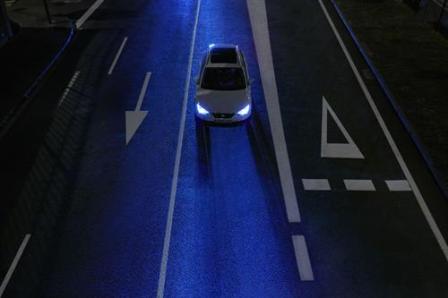[dropcap]J[/dropcap]uly is significant in Europe. It is about the height of summer holiday period. But in Nigeria, it is a season taken for granted. For it does not snow. It only rains and rains. So it’s a season of umbrella and for motorists, a season, when your electrics have to be in good order, a season, when vehicles can disappoint along flooded bad roads.
In Nigeria, therefore, except farming rural areas, this is not a season that motorists like to look forward to.
But in Europe, it is a season, when holiday makers want to make good of. No wonder, this time of the year, the roads are busiest and many people prefer to drive at night to take full advantage of their vacation days.
There is usually less traffic after dark, but the risk of suffering an accident also increases due to decreased visibility and fatigue. Night time accidents in Europe cause 37% of all driving casualties, so certain precautions must be taken to make driving safer:

 Turn on your low beams at dusk for better visibility and to be seen: You must drive with low beams at night, when it is raining or with poor visibility. The main beam should be used whenever possible, to avoid dazzling oncoming traffic. Some vehicles are equipped with an automatic dipped beam system that turns the lights on and off depending on exterior light conditions.
Turn on your low beams at dusk for better visibility and to be seen: You must drive with low beams at night, when it is raining or with poor visibility. The main beam should be used whenever possible, to avoid dazzling oncoming traffic. Some vehicles are equipped with an automatic dipped beam system that turns the lights on and off depending on exterior light conditions.
90% of the information needed to drive is processed through our sense of sight, and as visual perception decreases at night it takes longer to identify pedestrians, animals or traffic signals. In these cases, LED headlamps are a great ally, as they generate better light quality than halogen bulbs and the light they emit is very similar to daylight, which greatly improves visibility.
 Adapt your speed to be able to brake within the headlamp range. It is advisable to drive slower than you normally would during the day. The recommended speed when driving with low beams in Spain is 90 km/h.
Adapt your speed to be able to brake within the headlamp range. It is advisable to drive slower than you normally would during the day. The recommended speed when driving with low beams in Spain is 90 km/h.
Maintain a safe distance leaving a margin of no less than three seconds between you and the car in front of you.
Recognise early signs of fatigue such as if your eyelids get heavy, if you have trouble staying within your lane or if it is hard to remember where you have driven in the last kilometre. Drowsiness affects your reflexes and the effect is similar to driving with a blood alcohol level of 0.5 grams per litre. At the first signs of drowsiness, it is important to stop and rest or sleep until you can safely continue on your journey. Some vehicles are equipped with a drowsiness detector that identifies when the driver is tired and displays a warning sign on the instrument panel that recommends taking a break.
By following these tips, you won’t have any problems reaching your destination safely and securely.
Wishing you a happy Summer Motoring..
©Copyright MOTORING WORLD INTERNATIONAL.
All rights reserved. Materials, photographs, illustrations and other digital content on this website, may not be reproduced, published, broadcast, rewritten or redistributed in whole or in part without prior written permission from Motoring World International
Contact: editor@motoringworldng.com





